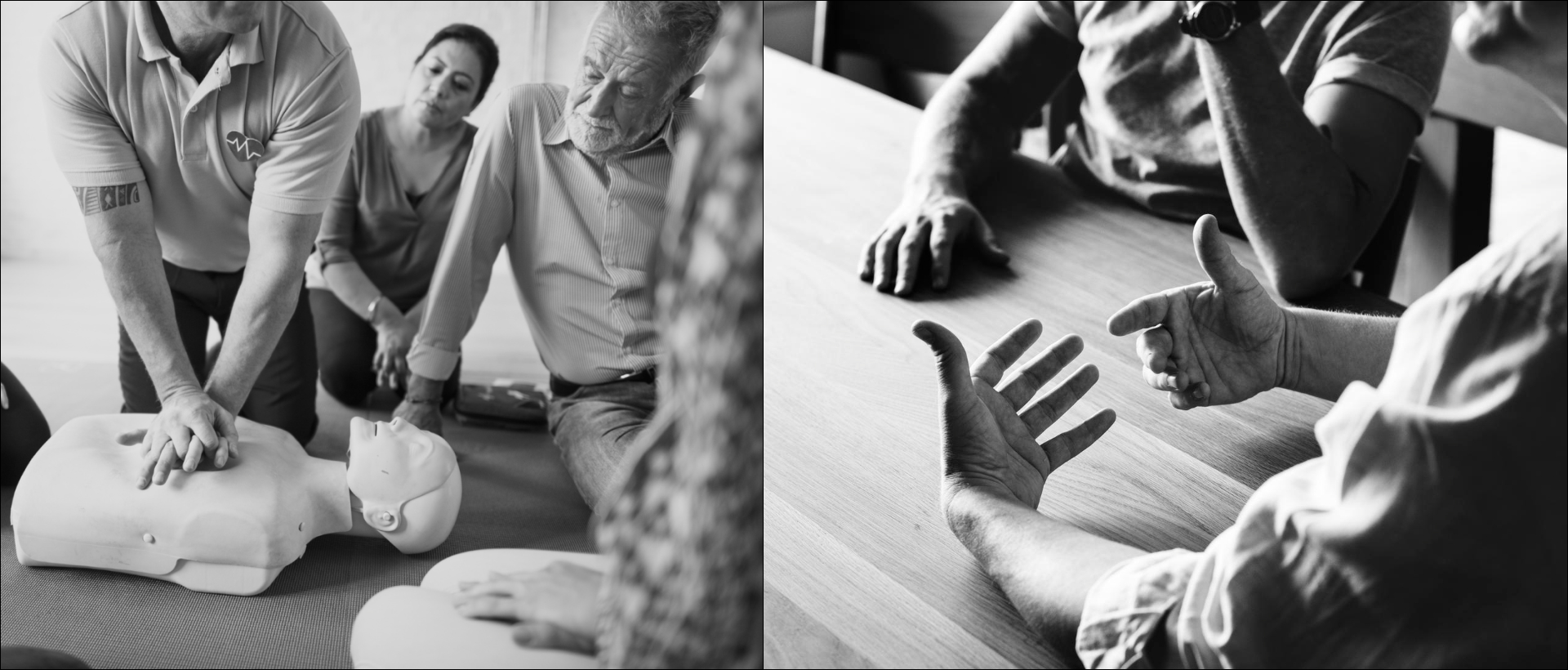
When someone is physically injured, we instinctively reach for a first aid kit to stop the bleeding, clean the wound, or call for help. But what about when someone is in mental or emotional distress? Mental health first aid is as essential as physical first aid in preventing situations from worsening. Using the ALGEE framework Approach, Listen, give support, encourage professional help, and Encourage self-help we can offer critical, life-saving support during a mental health crisis. Just like physical first aid, these steps are tools anyone can learn to apply, making a big difference when it’s needed most.
In this toolkit, we’ll compare the tools we use in physical first aid with the steps we take in mental health first aid, showing how both are vital in caring for others. Just as a bandage stops physical bleeding, approaching someone in distress can stop mental harm from escalating. Let’s explore how each step in ALGEE parallels the tools we use for bodily injuries, building a comprehensive toolkit for both body and mind.
Physical First Aid vs. Mental Health First Aid (ALGEE)
1. Bandage (Physical) vs. Approach (Mental)
Bandage: Stops external bleeding by covering the wound and preventing it from getting worse.
Approach (A): When you approach someone in mental distress, you’re creating a protective layer, much like a bandage. You help "stop the bleeding" of overwhelming emotions by being present and initiating a supportive, calm conversation.
Justification: By taking the first step, you prevent isolation, which could lead to further distress.
2. Cleaning Antiseptic (Physical) vs. Listen Non-Judgmentally (Mental)
Antiseptic:The wound to prevent infection from getting worse.
Listen Non-Judgmentally (L): Listening is like using an antiseptic on emotional wounds. By offering a safe space without judgment, you clean out negative thoughts or feelings of being misunderstood, which can "infect" mental well-being.
Justification: Listening non-judgmentally helps someone feel validated, reducing feelings of shame or self-blame that might worsen their state.
3. Splint (Physical) vs. Give Reassurance and Support (Mental)
Splint: Stabilizes a fractured limb to prevent further injury until professional help arrives.
Give Reassurance and Support (G): Offering emotional support is like applying a splint to a fragile mind. You help stabilize their mental state, offering comfort and reassurance that they are not alone, and that help is available.
Justification: This support prevents them from feeling overwhelmed or spiraling further into crisis, providing short-term emotional stability.
4. Calling Emergency Services (Physical) vs. Encourage Professional Help (Mental)
Emergency Call: You call for professional medical help when the injury is beyond what you can treat.
Encourage Professional Help (E): Just as you’d call an ambulance for a serious physical injury, mental health first aid involves guiding the person to seek professional help when their situation is beyond immediate support.
Justification: Professionals can offer long-term solutions or treatment that will address the deeper issues, preventing recurrence or worsening of the condition.
5. Recovery Position (Physical) vs. Encourage Self-Help Strategies (Mental)
Recovery Position: Placing someone in a safe position to prevent further harm while waiting for help.
Encourage Self-Help Strategies (E): Like placing someone in a recovery position, encouraging them to adopt self-care practices (like mindfulness, breathing exercises, etc.) allows them to manage their distress while waiting for or alongside professional help.
Justification: These strategies empower the individual to take steps toward self-recovery, reducing feelings of helplessness or dependency.


